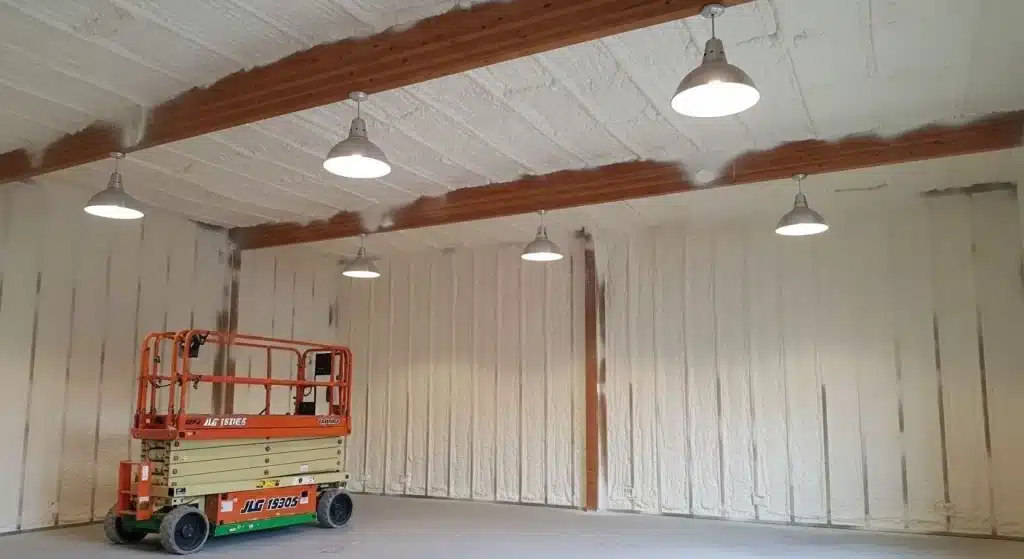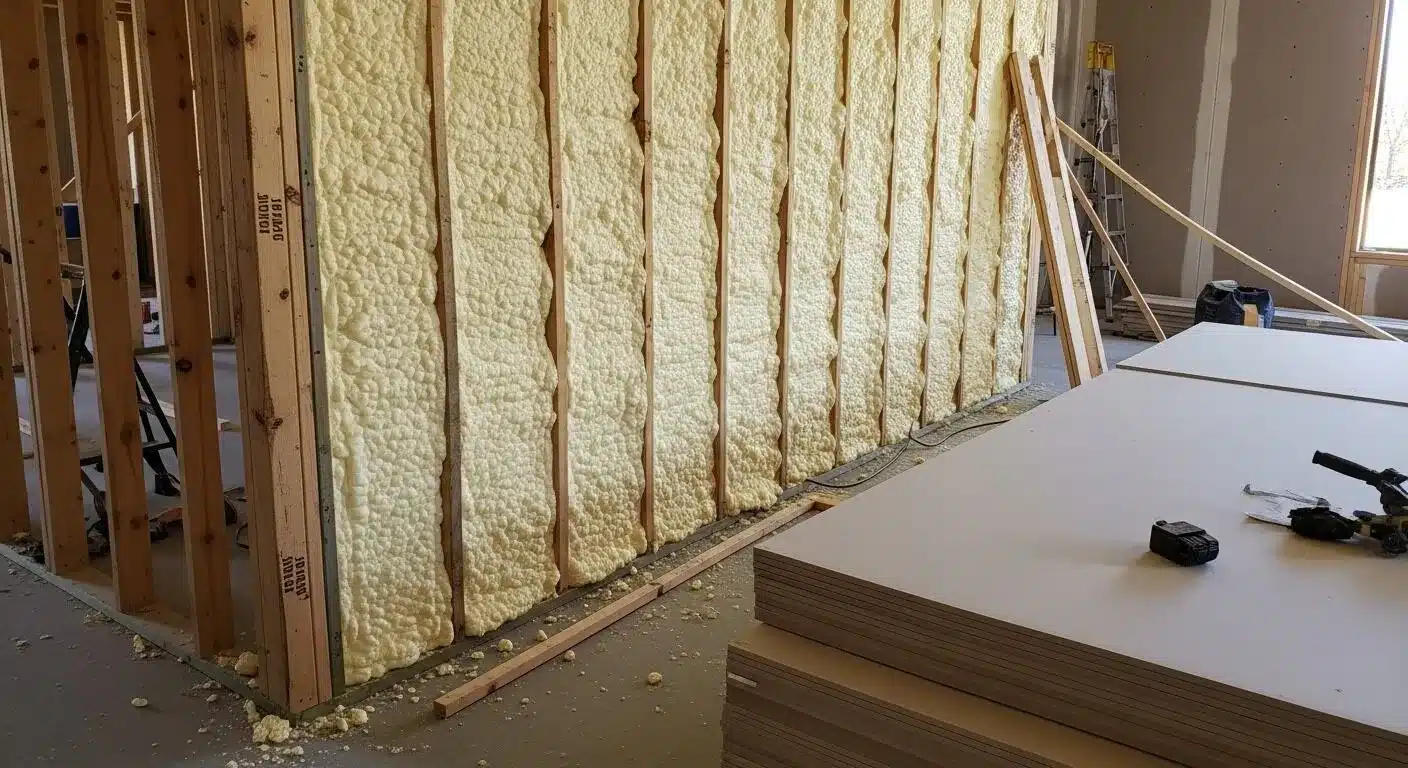Spray foam insulation often proves worth the investment for homeowners seeking long-term energy savings and better comfort, especially in hot climates like Las Vegas. It seals air leaks effectively and provides superior thermal resistance compared to traditional materials like fiberglass. However, its higher upfront cost and installation needs mean it suits certain situations best. In places like Las Vegas with intense summer heat, this insulation type can reduce cooling bills by up to 20 percent right away.
This breakdown covers costs, advantages, and downsides to help decide if it fits specific needs. Insights draw from extensive work with residential projects in Nevada, where heat management stands out as a daily challenge. Supreme Spray Foam LV bases these details on patterns seen across dozens of local installations, offering a grounded view of real performance.
Understanding Spray Foam Insulation Basics
Spray foam starts as a liquid mixture that expands to fill gaps upon application. Contractors spray it into walls, attics, or crawl spaces, where it hardens into a solid barrier. Two main types exist: open-cell foam, which feels spongy and allows some moisture movement, and closed-cell foam, denser and more moisture-resistant.
Open-cell spray foam suits milder areas but absorbs water, while closed-cell spray foam works well in humid or hot spots. In desert regions, closed-cell holds up better against temperature swings. For example, during Las Vegas summers hitting 110 degrees Fahrenheit, closed-cell foam prevents heat infiltration that looser insulations miss.
Before installation, test for air leaks with a simple incense stick method. Hold the burning stick near edges and windows; smoke drifting indicates spots foam can seal perfectly.
Advantages of Spray Foam Insulation
This material excels at creating an airtight seal, cutting energy loss through drafts. Homes with it often see lower utility bills year-round. A study from the U.S. Department of Energy notes that proper insulation like spray foam can slash heating and cooling costs by 15 to 25 percent in varying climates.
It also adds structural strength to walls and roofs, acting as a bonus reinforcement. In windy Nevada areas, this extra rigidity helps buildings withstand gusts up to 60 miles per hour without shifting. Noise reduction comes next; the foam dampens sounds from outside, creating quieter interiors.
Environmentally, many formulations use fewer harmful chemicals today, supporting greener homes. Market data shows the U.S. insulation market grew to $14.5 billion in 2022, driven by demand for energy-efficient options like spray foam, according to Statista.
Pair spray foam with ventilation upgrades in attics to avoid trapping humidity, particularly in dry but dusty environments like the Southwest.
Drawbacks to Keep in Mind
Upfront expenses run higher than batt or blown-in alternatives, often two to three times more. Installation requires trained pros with specialized gear, adding to the total. If applied wrong, off-gassing can occur, releasing mild odors for days.
Not every space suits it; uneven surfaces might need prep work, raising labor time. In older homes, asbestos risks during retrofits demand extra caution. Closed-cell versions block moisture well but can trap it if leaks exist nearby, leading to mold in rare cases.
Schedule installations during cooler months to ease the process and reduce worker discomfort in hot climates.
Cost Breakdown and Comparisons
Initial costs for spray foam range from $1 to $3 per board foot installed, depending on type and area size. A typical 1,500-square-foot home attic might total $3,000 to $6,000. Factor in prep like removing old insulation, which adds $500 to $1,000.
Compare that to fiberglass batts at $0.50 to $1.50 per board foot or cellulose at $1 to $2. Savings appear over time: payback periods hit 3 to 5 years through reduced energy use. In hot regions, the Oak Ridge National Laboratory reports closed-cell foam performs 50 percent better at blocking heat gain than fiberglass.
Here’s a quick comparison table for common insulation types in a 1,000-square-foot attic:
| Insulation Type | Cost per Board Foot (Installed) | R-Value per Inch | Energy Savings Potential | Best for Hot Climates? |
|---|---|---|---|---|
| Spray Foam (Closed-Cell) | $1.50 – $3.00 | 6.5 – 7.0 | High (20-30%) | Yes |
| Fiberglass Batts | $0.50 – $1.50 | 3.1 – 4.4 | Medium (10-15%) | No |
| Blown-In Cellulose | $1.00 – $2.00 | 3.2 – 3.8 | Medium (15-20%) | Moderate |
Regional note: In Las Vegas, expect 10-15 percent higher quotes due to heat-resistant materials and AC demands year-round.
Things to Consider Before Making a Decision
Assess home age and current setup first. New builds integrate spray foam smoothly, but retrofits in older structures need structural checks for compatibility. Climate plays a big role; extreme heat or cold amplifies benefits, while mild areas might not justify the price.
Budget extends beyond installation: calculate potential rebates from utilities or tax credits like those under the Inflation Reduction Act, up to $1,200 for insulation upgrades. Energy audits reveal if air sealing alone solves issues or if full insulation fits better.
Lifestyle matters too. Families in noisy neighborhoods gain from soundproofing, while allergy sufferers prefer low-dust options. Long-term plans count; selling soon? Basic upgrades suffice, but staying put rewards bigger investments.
Inspect for moisture sources, as foam amplifies problems if water enters. In arid zones, focus on dust control during application to avoid settling indoors.

Common Questions
Can I install spray foam insulation myself?
DIY kits exist, but professional installation is strongly recommended. Pros have the right equipment and safety training—attempting it yourself risks uneven coverage and exposure to harmful fumes.
Is spray foam insulation environmentally friendly?
Modern spray foams are designed to be more eco-conscious. Many are low-VOC, reducing harmful emissions, and some newer formulations can even be recycled—supporting sustainable building practices.
Answers to Top Questions About Spray Foam Insulation
Does spray foam increase home value?
Yes, it boosts resale appeal by highlighting energy efficiency. Appraisers note improved ratings on Home Energy Scores, potentially adding 2 to 5 percent to market price in efficiency-focused markets.
Is it safe for indoor air quality?
Modern products meet strict EPA standards with minimal off-gassing after curing. Ventilation during and post-installation ensures fresh air circulation.
How does it compare to other insulations in humid areas?
Closed-cell resists moisture better than open-cell or fiberglass, preventing condensation buildup. However, pair it with dehumidifiers in truly wet climates.
Can you remove spray foam if needed?
Removal proves challenging and costly, often requiring wall demolition. Plan placements carefully to avoid future regrets.
What warranties come with installations?
Most offer 20- to 30-year limited warranties against defects, covering material performance but not labor unless specified.
Final Thoughts
Spray foam insulation delivers strong returns through efficiency and durability, balancing higher costs with lasting savings. Weigh pros like airtight seals against cons such as price and application limits. Evaluate home specifics, local climate, and budget to see if it aligns with goals. Taking time to review energy needs leads to smarter choices for comfort and savings.
Next Steps for Your Home
Consider a professional assessment to match insulation to your setup. Contact Supreme Spray Foam LV at (702) 904-9895 or email [email protected] for guidance on options suited to Nevada homes. This step clarifies fit without commitment.
Sources
- U.S. Department of Energy – Government resource on insulation types, benefits, and energy savings data.
- Oak Ridge National Laboratory – Research lab providing performance studies on building materials like spray foam in various climates.
- Statista – Market research firm with data on the U.S. insulation industry growth and trends.



